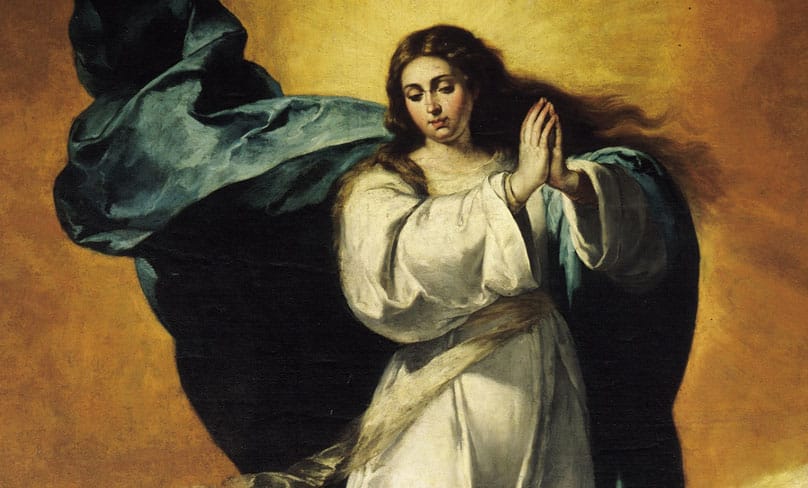
“Dear Father, I have heard of efforts to have the Church define a new dogma of Mary Co-redemptrix or Co-redeemer. What is behind this and do you think such a title is opportune?”
First, a bit of background. Already in the Second Vatican Council (1962-65) some 50 council fathers requested that this title be applied to Our Lady, even though the Council did not choose to do so.
A year after the Council ended, during a Mariological Congress in August 1966 in Czestochowa, Poland, a commission was established in response to a request from the Holy See to canvass the opinion of the scholars there as to whether it was opportune to define a fifth Marian dogma declaring Our Lady Co-redemptrix, Mediatrix and Advocate.
The commission unanimously declared that such a definition was not opportune, voting 23-0 against it.
In 2000 the then Cardinal Joseph Ratzinger, in his book God and the World had this to say in answer to a question on the matter: “The formula ‘Co-redemptrix’ departs to too great an extent from the language of Scripture and of the Fathers and therefore gives rise to misunderstandings. Everything comes from Christ, as the Letter to the Ephesians and the Letter to the Colossians, in particular, tell us; Mary, too, is everything she is through Him.
The word ‘Co-redemptrix’ would obscure this origin. A correct intention being expressed in the wrong way.”
What then are the arguments in favour of declaring Mary Co-redemptrix? A starting point is the fact that Mary in the Annunciation accepted Jesus our Redeemer into her womb and into the world, thereby cooperating at least in a mediate or indirect way in our Redemption.
Related article: Q&A with Fr John Flader: Victories credited to Mary
Then too, when Mary and Joseph presented Jesus to the Father in the temple, they were offering him up to fulfil his mission, especially to bring about our Redemption. And at the Cross of Calvary Our Lady suffered unspeakably with Our Lord, uniting herself with his redemptive sacrifice.
The Second Vatican Council speaks of this cooperation of Mary in the work of her Son: “She conceived, brought forth, and nourished Christ, she presented him to the Father in the temple, shared her Son’s sufferings as he died on the cross. Thus, in a wholly singular way she cooperated by her obedience, faith, hope and burning charity in the work of the Saviour in restoring supernatural life to souls” (LG, n. 61).
This cooperation in the work of Redemption surely makes Our Lady a co-redeemer, a co-redemptrix.
St Bernard’s disciple Arnold of Chartres, contemplating the sacrifice of Calvary, saw in the cross “two altars, one in the heart of Mary, the other in the body of Christ. Christ immolated his own flesh, Mary her own soul”.
“Both equally offered to God the same holocaust.” In this way Mary “obtained with Christ the common goal of the salvation of the world”.
Without calling Mary specifically “co-redemptrix” Arnold was laying the foundation for this title.
While it is true that only Our Lord, as God, could redeem us and reconcile us with the Father, there is nothing to prevent him from allowing others to cooperate with him in this work, as he did with Our Lady.
Related article: Q&A with Fr John Flader: Remarkable apparitions
At the cross Our Lady cooperated in the work of objective redemption, suffering with Christ for the redemption of all mankind.
But she, and indeed all the baptised, are called to cooperate in the work of subjective redemption, the application of the fruits of the cross to individual souls.
We do this by praying for others and bringing them closer to God so that they can be baptised and saved.
In this way, not only Our Lady in a special way by her intercession for souls in heaven, but all of us here on earth are called to be co-redeemers with Christ. In this sense St Paul writes that “we are God’s fellow workers” (1 Cor 3:9).
So even if it is never defined as a dogma, Our Lady cooperated with Our Lord in the work of redemption, which would make her a co-redeemer.
Pope Benedict XV expressed this truth in his Apostolic Letter Inter sodalicia (1918): “In such a way, together with her Son suffering and dying, she suffered and almost died; and in such a way, for the salvation of mankind, she abdicated the rights of a mother over her Son and she immolated him, insofar as it depended on her, to satisfy the justice of God, that it can rightly be said that she redeemed mankind along with Christ.”
